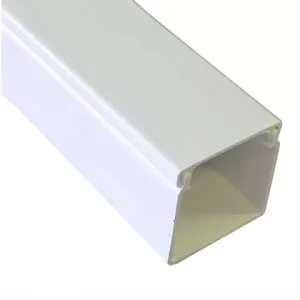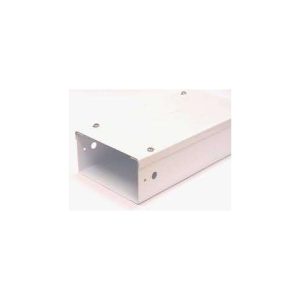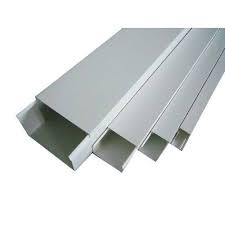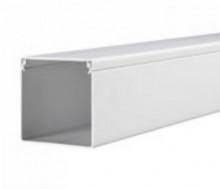In the world of business communications, having a reliable and efficient phone system is crucial. Whether you’re a small startup or a growing enterprise, a Private Branch Exchange (PBX) system can significantly enhance your communication capabilities. Among the various PBX systems available, Yeastar PBX systems have gained popularity for their versatility, cost-effectiveness, and feature-rich offerings. If you’re new to the world of PBX systems, this beginner’s guide will provide you with valuable insights into Yeastar PBX systems.
Understanding PBX Systems
What is a PBX System?
A PBX system, or Private Branch Exchange, is a centralized telecommunication system used within an organization to manage incoming and outgoing phone calls. It connects internal phone lines to the public switched telephone network (PSTN) and allows for efficient call routing, call forwarding, voicemail, and other communication features.
Why Use a PBX System?
PBX systems offer several benefits, such as:
-
Cost Savings: By using VoIP (Voice over Internet Protocol) technology, PBX systems can reduce long-distance call costs and eliminate the need for multiple phone lines.
-
Enhanced Communication: PBX systems provide features like call forwarding, voicemail, and call waiting, which improve communication efficiency.
-
Scalability: PBX systems can easily grow with your business, making them suitable for both small and large enterprises.
Yeastar PBX Systems Overview
What is Yeastar?
Yeastar is a leading provider of PBX systems and VoIP gateways. They offer a range of PBX solutions suitable for businesses of all sizes. Yeastar is known for its user-friendly interfaces, robust features, and affordability.
Types of Yeastar PBX Systems
Yeastar offers several PBX systems, including:
Yeastar S-Series PBX
The Yeastar S-Series VoIP PBX is a versatile and feature-rich solution suitable for small and medium-sized businesses. It combines traditional telephony and VoIP capabilities, providing a seamless communication experience. Key features of the S-Series include:
- Modular Design: The S-Series is available in different models with varying capacities, allowing you to choose the one that best fits your current and future requirements.
- Unified Communications: It supports a range of communication tools, including voice calls, video calls, instant messaging, and conferencing, promoting efficient collaboration.
- Auto Provisioning: With the auto-provisioning feature, you can easily set up and manage IP phones and endpoints, reducing manual configuration efforts.
Some Yeastar S-Series products available at Informed Store Kenya include:
Yeastar P-Series PBX
The Yeastar P-Series PBX System is a hybrid solution that combines the benefits of both VoIP and traditional telephony. It is designed for businesses that require a mix of analog and digital connections. Key features of the P-Series PBX System include:
- Analog and Digital Integration: The P-Series supports a variety of analog and digital interfaces, making it suitable for businesses with diverse communication needs.
- Reliable Connectivity: With support for PSTN and ISDN lines, the P-Series offers reliable communication options, especially in regions with limited VoIP infrastructure.
- Built-in Call Recording: The system includes call recording capabilities, which can be valuable for compliance, training, and quality assurance purposes.
Some of Yeastar P-Series models available at our store include?
Key Features of Yeastar PBX Systems
Yeastar PBX systems come equipped with a wide array of features that enhance communication efficiency, collaboration, and overall business operations. Understanding these key features will help you leverage the full potential of your chosen Yeastar PBX system.
VoIP Telephony
All Yeastar PBX systems are built on VoIP technology, allowing you to make calls over the internet rather than traditional telephone lines. This offers significant cost savings on long-distance and international calls and provides better call quality and clarity.
Unified Communications
Yeastar PBX systems promote unified communications by integrating various communication tools into a single platform. This includes voice calls, video calls, instant messaging, presence status, and even audio and video conferencing. Unified communications streamline communication and collaboration among team members, whether they are in the office or working remotely.
Scalability and Flexibility
Whether you’re a small startup or a large enterprise, Yeastar PBX systems can accommodate your changing communication needs. With modular designs and cloud-based options, you can easily scale up or down based on the size of your organization and the volume of calls.
Advanced Call Routing
Yeastar PBX systems offer advanced call routing options that ensure incoming calls are directed to the appropriate department or individual. Features like automated attendants, IVR (Interactive Voice Response), and call forwarding enhance customer experience and improve call handling efficiency.
Built-in Security Measures
Security is a top priority for Yeastar. Their PBX systems come equipped with built-in security measures such as firewalls, encryption, and access controls to protect your communication network from unauthorized access and potential threats.
Getting Started with Yeastar PBX
Selecting the Right Yeastar PBX System
Choosing the right Yeastar PBX system for your business depends on factors such as the number of users, your budget, and your specific communication needs. Yeastar offers a variety of models, so it’s essential to evaluate your requirements carefully.
Installation and Configuration
Once you’ve selected the appropriate Yeastar PBX system, the next step is installation and configuration. While Yeastar systems are known for their user-friendly interfaces, it’s advisable to seek professional assistance to ensure a smooth setup process.
Basic Features and Functionality
Yeastar PBX systems come with a wide range of features, including:
- Call Routing: Set up rules for call forwarding, time-based routing, and more.
- Voicemail: Allow callers to leave messages when you’re unavailable.
- Auto-Attendant: Create a virtual receptionist to greet callers and direct them to the right department.
- Conference Calling: Easily host audio and video conferences with team members and clients.
- Integration: Integrate your PBX system with other business applications and services.
Setting Up a Yeastar PBX System
Setting up a Yeastar PBX system is a crucial step in improving your business’s communication infrastructure. Yeastar offers a range of PBX solutions, including the S-Series and P-Series, suitable for different business sizes and needs.
Hardware Requirements
Before you begin, ensure that you have the necessary hardware components for your chosen Yeastar PBX system. This may include:
- Yeastar PBX device (S-Series, Cloud PBX, K2, or P-Series)
- IP Phones or SIP endpoints
- Ethernet cables and network switches
- Analog or digital lines (if applicable)
- Power source and backup solutions
Physical Installation
Start by physically installing your Yeastar PBX system. Follow these steps:
- Place the PBX unit in a secure, well-ventilated location.
- Connect the power adapter to the PBX unit and plug it into a power source.
- Connect the PBX to your local network using an Ethernet cable.
- If you’re using analog phones, connect them to the PBX using appropriate interfaces.
Initial Configuration
After the physical installation, it’s time to configure the basic settings of your Yeastar PBX:
-
Access the Web Interface: Open a web browser and enter the default IP address of your Yeastar PBX unit. You can find this information in the user manual or on a sticker on the PBX itself.
-
Log In: Log in to the web interface using the default username and password provided in the manual. It’s crucial to change these credentials for security reasons.
-
Set Up Network Settings: Configure the network settings, including IP address, subnet mask, and gateway. Ensure your PBX has internet access.
Create User Accounts
Depending on the number of users in your organization, you’ll need to create user accounts for each one. Here’s how:
- Navigate to the user management section of the web interface.
- Add users one by one, specifying their names and extensions.
- Assign phone numbers, voicemail passwords, and other settings as needed.
Configure Extensions and Dial Plans
Extensions determine how calls are routed within your organization. Follow these steps to configure extensions:
- Set up internal extensions and associate them with users.
- Create dial plans to define call routing rules based on various criteria, such as time of day, caller ID, and more.
Implement Advanced Features
Yeastar PBX systems offer a variety of advanced features to enhance your communication capabilities. Some common features include:
- Voicemail: Set up voicemail boxes for users.
- Auto-Attendant: Create a virtual receptionist to greet callers and route them to the appropriate department.
- Call Routing: Configure call routing rules to direct incoming calls.
- Call Recording: Enable call recording for quality control and compliance.
- Conference Rooms: Set up conference rooms for virtual meetings.
Test Your Configuration
Before putting your Yeastar PBX system into production, thoroughly test it:
- Make test calls to ensure that call routing and extensions work as expected.
- Verify that voicemail and other features are functioning correctly.
- Test conference calls and any other advanced features you’ve implemented.
Yeastar PBX System Maintenance
Regular maintenance and upkeep are crucial to ensuring the longevity and optimal performance of your Yeastar PBX system. Here’s how you can effectively maintain your system:
Regular Updates and Upgrades
- Firmware Updates: Stay up to date with the latest firmware releases from Yeastar. Firmware updates often include bug fixes, security patches, and new features.
- Module Upgrades: If your Yeastar PBX system supports modular expansion, consider upgrading or adding modules to meet changing business needs.
Troubleshooting Common Issues
- Diagnostic Tools: Familiarize yourself with the diagnostic tools provided by Yeastar. These tools can help identify and resolve issues related to call quality, connectivity, and configuration.
- Knowledge Base and Community: Utilize the Yeastar knowledge base and online community forums to find solutions to common problems and share insights with other users.
Backing Up and Restoring Configuration
- Regular Backups: Regularly back up your PBX system’s configuration and settings. This ensures that you can quickly restore the system to a working state in case of data loss or system failures.
- Configuration Cloning: If you have multiple Yeastar PBX systems, consider using configuration cloning tools to replicate settings and configurations across devices.
Monitoring and Performance Optimization
- Performance Monitoring: Continuously monitor your Yeastar PBX system’s performance, call quality, and network usage. Address any performance bottlenecks promptly.
- Optimization Techniques: Optimize call routing rules, extensions, and system settings based on call patterns and usage data.
Yeastar PBX systems are an excellent choice for businesses looking to streamline their communication processes and improve customer service. As a beginner, understanding the fundamentals of PBX systems and the features that Yeastar offers is crucial to making the most of this technology. Whether you’re a small startup or a large corporation, Yeastar has a PBX solution that can help you enhance your communication capabilities, boost productivity, and stay competitive in today’s fast-paced business world.
























